Ok, so if you want to freeze action outside using both sunlight and flash, you’ll need to use a high shutter speed to freeze those parts of the subject that are lit by the sun – as its a continuous source. Sure you may be able to light the subject in such a way that they are dominated by flash, and use a regular x-sync compatible shutter speed to freeze your subject with fast flash, however to get them completely frozen, you’ll need to freeze all the light with a high speed shutter – say 1/4000th of a second. We know we can use compatible Speedlights for this with High Speed Sync (HSS pulses the light to share it out over the entire shutter operation – to act like a bright continuous light) however this is only possible with certain Speedlights. If you need more power, you can always tape more Speedlights together, however sometimes its more convenient to use one big light: you can configure it quicker and use all manner of modifiers on big lights.
However – there is another way. Big old long duration studio lights have a long tail of light that takes a while to die away. If we open and close the shutter at the exact right time, after the initial peak of light, and just use the tail-off, it’ll be pretty even across the frame. This is known as Tail Sync. All we need then, is a way of delaying the shutter operation. A number of radio trigger systems based on the 2.4GHz frequency are fast enough to do this. Pocket Wizard III’s can do it, and so can the Yongnuo YN622N triggers I use on my Nikon Speedlights. I have some old and very slow studio lights (CF-D300’s from Viewfinder) so I thought I’d try some tests. Yongnuo call this “SuperSync”. First – some control tests using the regular radio triggers:-
From left to right: 1/160th, 1320th and 1/640th of a second. By 1/640th of a second shutter speed, the rear curtain has almost closed by the time the light gets out there. Now we’ll swap over to a YN622N on the strobe, and a YN622N-TX on the camera. The receiver is on channel 1, group A and I have group A set to manual on the YN622N-TX. The strobe is on minimum power – just as it was for the control shots.
The shutter speeds go from 1/640, 1/1250th, 1/2000th, 1/4000th and 1/8000th in these shots. The subject is the actual receiver that is connected to the sync port on the strobe. As I took a stop away by doubling the shutter speed each time, I put this back by opening up the lens until I hit f/1.8 and then started doubling the ISO instead, so the exposures should be roughly the same. In the last shot, I stopped down to f/8 again, put the ISO back to 100, the shutter at 1/1250th and turned the strobe up to full power. I didn’t need to touch anything on the trigger to make this happen – it automatically switches to tail sync or HSS depending on what is attached to the receiver when it sees a shutter speed on the camera that is out of bounds (you can set this value on Nikon bodies and mine is set it to 1/160th when I have the camera in “studio” mode, and 1/250th in the “normal” settings bank). The letters “FP” appear in the YN622N-TX display when the shutter speed is above the X-Sync value. Next I tried my new state of the art IGBT driven Lencarta 600-SF strobes. Now these work like Speedlights and have a very brief flash duration at lower outputs as they have the ability to cut the light off dead rather than letting it tail off. So tail sync will only work at all at full power, and even then they are much faster than the old style lights. Tail sync still works, although you need to be even more precise with the timing:-
The difference in these 2 shots is achieved by manually varying the delay on the YN622N-TX. By doing this you can move the window of light about: see how the light is visibly higher up the frame on the first shot (left) as it has fired later than in the one on the right. Remember that outside, we will also have ambient light so this is not as critical – these test shots are pure flash, and the light is only skimming the background. Just to see what would happen, I turned the 600-SF down to minimum power (where it is fastest) and as expected, we illuminate only a fraction of the frame that is between the shutter curtains at the time of the flash.
Note how by altering the sync delay on the trigger, I can choose where the slit appears: adding less delay moves it up the frame (the top bar is the front curtain and the bottom bar is the rear curtain. Other makes of camera may have the curtains travelling down instead of up , or from side to side etc). The with less delay, the curtains have moved further before the flash starts. With the right heads though, it works well – in fact I’m surprised just how well this does work, and how seamless and easy it is to setup. The YN622N system also allows you to mix this SuperSync activity with iTTL and manual Speedlights, all in the same exposure: e.g. one group set to SuperSync controlling any amount of old strobes, and the other 2 groups set to iTTL or manual with CLS compatible Speedlights attached to the receivers. Next stage is to test this outside the next time we have some strong sunlight, to see if there’s enough useful power to compete with the sun at fast shutter speeds.

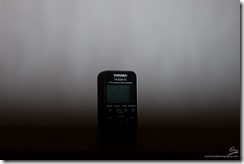




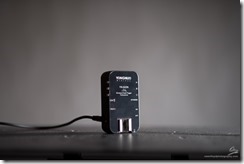
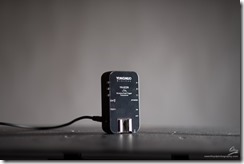
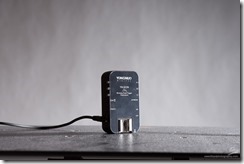

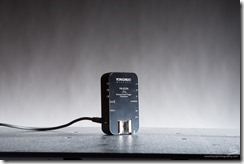


Hi and thanks for a well presented and informative explanation of the supersync function, it’s just what I’ve been looking for.
This is precisley the situation that I’ve been wanting to explore, mixing studio strobes with speedlights using my newly aquired Yongnuo TX and triggers.
Perhaps you could clarify one point for me, you say that you can have one group of old strobes set to Supersync and another group of Speedlights set to TTL. How would you achieve this? Isn’t the Supersync function selected via the camera’s FP setting? How would you arrange different settings for different groups.
Hi Ken – you don’t need to set anything on the camera for this to work (although the receivers will kick over into SuperSync or High Speed sync based on the x-sync speed you set in the menu). The Nikon flashes all think they are on the camera (Yongnuo doesn’t re-send the Nikon AWS communication over radio, they re-created the whole thing). This is why you need to set the Nikon CLS or compatible (eg Yongnuo YN5655 or YN568) to “on” rather than “remote”. Say you have group A (set to TTL or manual) and you have some Nikon SB900’s on YN622N receivers, and you have group B set to manual with a slow studio strobe on a YN622N receiver). If the shutter speed is within x-sync (say you have this set to 1/200th) both groups will fire normally according to the settings on the YN622N-TX. Of course, for the studio strobe, it’s just a trigger – the power setting on the YN622N-TX is not used, even though you can still set it on the display. If you push the shutter speed to say 1/2000th of a second, the SB900’s on group A will fire in High Speed Sync mode, and the studio strobe will be fired in SuperSync. The YN622N’s are clever enough to work out what it attached to them (ie whether here is a CLS compatible strobe attached to the hot-shoe or not). The indicator light is green for CLS compatible lights, and orange (I think – not 100% sure as I write this) for manual flash (whether that be manual hot-shoe gun or a studio strobe on the sync cord port). Hope this helps!
OWen
Owen,
thanks for taking the time to reply, all is becoming clear. Your comment about Yongnuo not resending the AWS communication helps to explain some of the idiosyncrasies of the system.
I’ve been having a play with my kit (Nikon D7000, YN622-TX, YN622N receivers, Yongnuo 568 and Nikon SB-700 speedlights) to try and become more familiar with their operation before I use them in anger and it has thrown up some observations and questions that perhaps you could comment on. Forgive me if I’ve strayed from the original Supersync topic a little bit.
You say YN622N’s are clever enough to know what is attached to them and that the indicator light changes to reflect this. Green for CLS compatible lights. No matter how I set up my Speedlights I never get the green indication although they are definitely in iTTL mode and functioning correctly. If however I attach a YN622N to my camera as a transmitter the LED will change colour to indicate whether it is transmitting in manual or iTTL mode (orange or green)?
I’m struggling a bit to understand the iTTL BL function so any explanation would be particularly appreciated. With my SB-700 mounted on the camera it will switch between iTTL BL and iTTL depending on the metering mode selected. All very logical and understandable. With the SB-700 off camera the only mode available (as far as I know) is iTTL. Is this Nikon in their wisdom telling me that no one in their right mind would want to use fill flash with the speedlight off camera or am I missing something?
Using the YN622N-TX and the SB-700 off camera the speedlight will never give a iTTL BL indication although the TX does have a have a BL icon which displays correctly depending on the metering mode. So it appears that in this instance the speedlight isn’t completely fooled in thinking that it’s mounted on the camera. Not a problem but does this mean that I can use the BL function off camera when using the TX but not with the native CLS. i.e. the extra functionality is available because it thinks that it’s mounted on the camera? Or am I missing the point completely and should I forget about trying to use iTTL BL with an off camera speedlight?
A small observation that might give an insight into the Yongnuo communication protocols and why I’ve seen it reported that the switch on sequence is important. If I have area metering selected on the camera the TX displays the “BL” icon. If I then change the mode to spot metering the icon doesn’t change UNTIL the TX sleeps and is woken or is switched off/on, it then disappears. It would be interesting to know if the mode has actually changed and it’s just the display that hasn’t refreshed?
Regards and thanks for your help.
I think you’re right Ken – balanced fill probably doesn’t make much sense when the light is off the camera as it could be behind the subject for example. Interesting that the BL will not appear when it’s mounted on a YN622N though – as the light should believe it’s on the camera. The YN622/TX uses the TTL mode on the light to recreate all the other modes – including manual mode, which seems backward, but it’s the only mode that allows the YN622N receiver to emulate a camera and control the power output – so it could well be that when you see “BL” on the TX, it really is shooting in BL – albeit Yongnuo’s version of it, as emulated using straight iTTL.
I’ve not tried changing the metering mode while it’s all up and running. The flash or TX goes to sleep when the exposure meter times out, so if it only recognises the change when the meter times out and is brought back on again (by pressing the AE/shutter release etc) this could be a problem if you disabled the time-outs – which I do when shooting with an EyeFi card to relay jpegs, as that goes off as well when the meter shuts down which means the WiFi hot-spot it generates, vanishes… That said, I’ve never found the start up sequence to be important. It may be that I’ve just always switched them on in the right order. I regularly turn the camera off during a shoot and this doesn’t seem to matter. Pretty sure I’ve turned the TX off and back on again as well.
I’ll have a play around when I get a moment. Incidentally, make sure you have the latest firmware on the TX – http://www.hkyongnuo.com/e-detaily.php?ID=339
Hi, I have a TX and 2 yn-622n receivers with SB-700. I also have a Nikon D5200 set to SPOT metering. When I turn the TX on, the BL indicator doesn’t show up, as expected. However, if the camera/TX go on standby/sleep mode, when they wake up by pressing the shutter button, the BL indicator appears on its own. Is this just a bug of the display or is BL mode now auto-enabled, irrespective of the camera settings? I don’t like BL, I find it unreliable, and I thought that by setting the camera to spot metering it would be disabled. Any help will be appreciated.
Gabe
Hi Gabe,
there seem to be a couple of display bugs related to this. On my D800E it displays whatever mode it is in when started up in even when you switch exposure modes – eg you start up in full scene at it displays “BL” on the TX; you switch to spot metering and it still displays “BL” on the TX until the exposure meter times out and you re-awaken it by half pressing the shutter etc. However, it does always display the correct mode after the exposure meter times out and comes back on again. On my D5200, in addition to the above behaviour it does exactly as you describe: in spot metering, after the timeout and re-awaken, “BL” comes back. As far as I can tell though, it is not in balanced fill mode (which assumes the flash distance is the same as the shooting distance). I don’t know why it displays this, ever, regardless of metering mode – as the flash unit itself should not be in TTL-BL mode – just regular TTL, and off-camera, balanced fill just doesn’t make any sense, as the camera does not know where the flash is or what direction it is pointing. Firmware is now at 1.05, however it still behaves the same after the update
Owen
Pingback: Superando La Velocidad de Sincronización De Nuestra Cámara En Fotografías Con Flash: ¿Qué Opciones Existen?